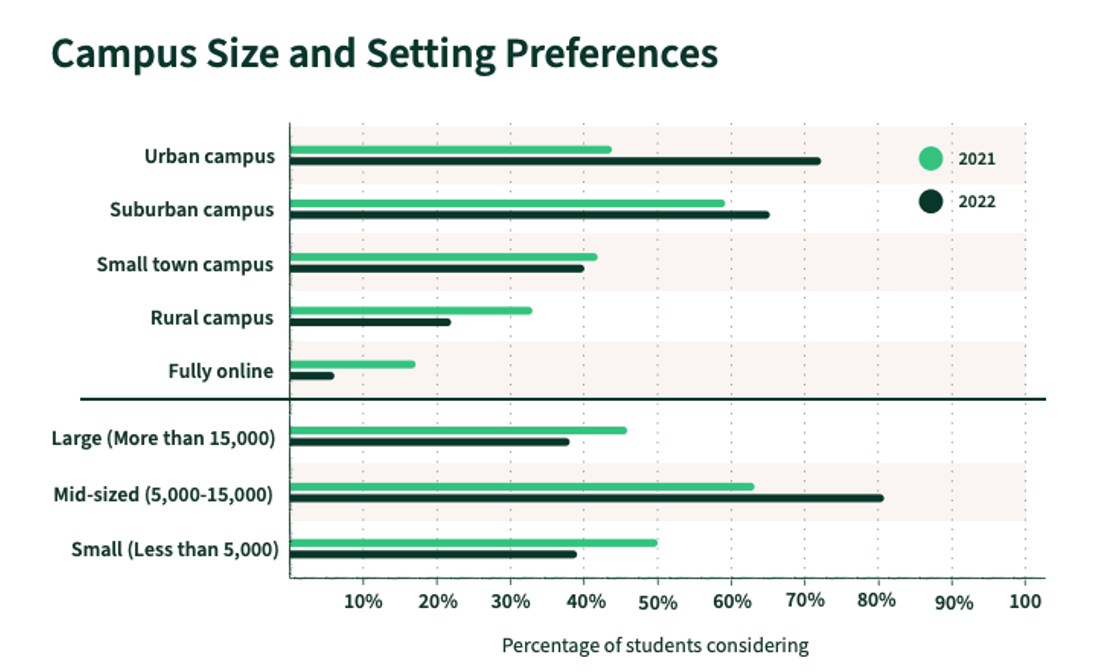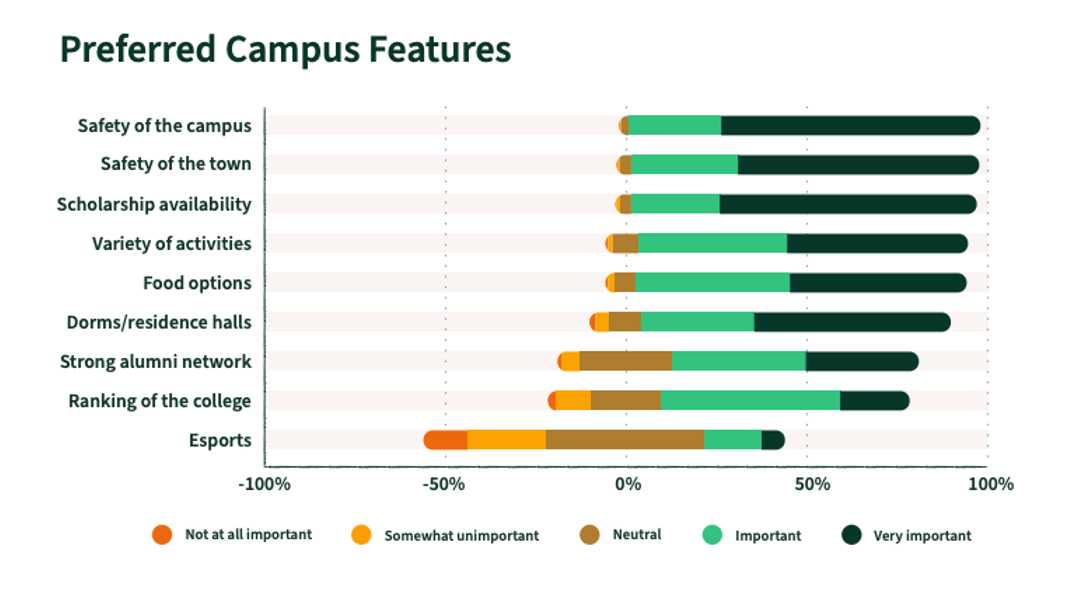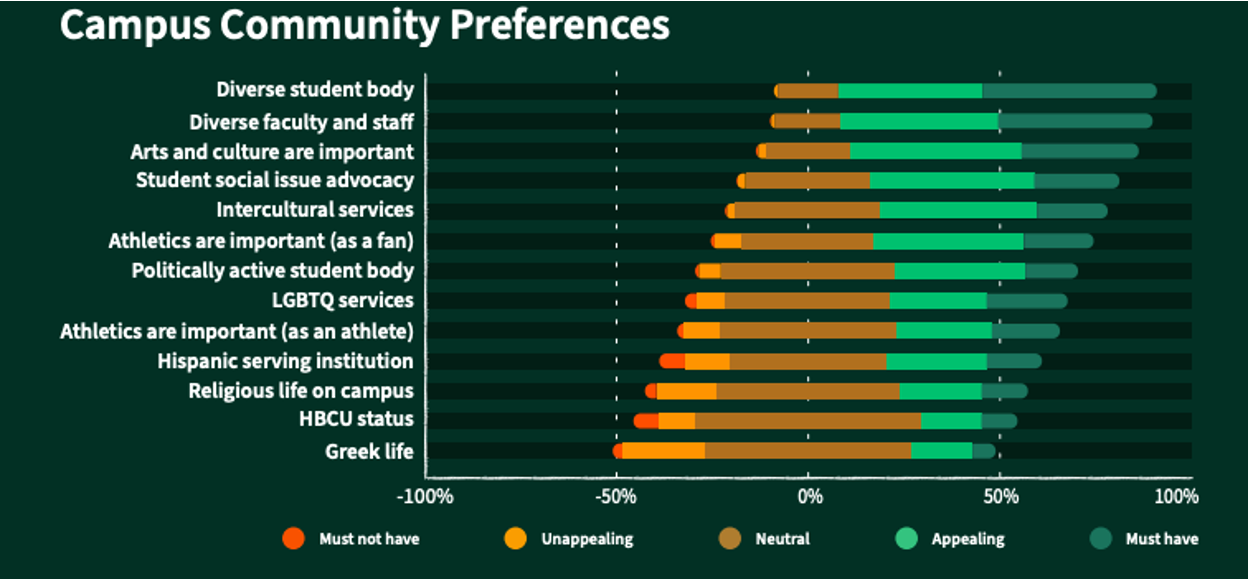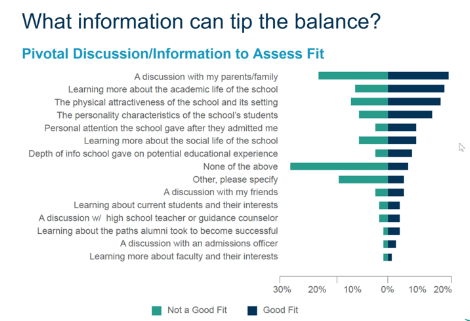This page is licensed under Creative Commons under Attribution 4.0 International. Anyone can share content from this page, with attribution and link to College MatchPoint requested.
How Students Decide Which College to Attend
After months—or even years—of dreaming of, planning for, and applying to college, the most difficult step in the entire process can be picking which college to attend. Many students rely on rankings to compare schools, but the information relied upon in rankings is sometimes misleading or even inaccurate. It’s one of the biggest decisions a student will ever make, so how do you ensure they make a great choice on what college to go to.
Of course, there’s no magical algorithm to how to choose a college that feels like a great fit, but students can take a look at what other students are basing their decisions on.
A recent survey revealed the biggest factors behind eventual college enrollment choice for high school students. The survey covers college search and enrollment data from over 21,866 American high school students who graduated in 2022 looking back on their decisions, and the results showed that there were definitely some common driving factors.
Here are a few key findings for students and families when it comes to picking colleges:
- The majority of students (62%) say a college’s brand and name recognition influenced their decision; only 5% said that it didn’t matter to them at all.
- Size and location mattered to students, with urban and suburban campuses climbing in appeal compared to rural campuses.

- Safety of the campus and surrounding community was top of mind for most students as was the availability of scholarships. Interestingly, esports made the list of preferred campus features.

- When it came to what students wanted in a campus community, diversity ranked first on the list: 84% preferred a diverse student body and 81% wanted their college to have diverse faculty and staff.

Students in the survey pointed to various sources of information they assessed in order to feel confident about their choices.
Three-quarters of respondents reported that family was influential in the enrollment decision. The next most influential group was current students at a college (64%) and then friends (61%).
The emphasis on family makes sense for two reasons: (1) A student’s family knows the student better than anyone and can help suss out which school might be the best fit and (2) Affordability can be such a decisive factor, with a family’s finances playing a big role in which schools a family can afford.
A survey of 100,000 American high school students by Eduventures Research provides additional insight into the biggest factors behind eventual college enrollment choice for high school students.
80% of students surveyed pointed to one of seven reasons behind their final decision: affordability, desired program, career outcomes, reputation/academic quality, value, proximity to home, and of course, that elusive “fit.”

So as a student is making their decision, it’s important to keep those seven “decision segments” in mind—and figure out which is most important.
A few key findings for students and families:
- Among the 57 percent of survey participants attending schools in their home states, affordability was the leading factor (cited by 24 percent of those respondents), followed by the offer of a desired program (14 percent)
- Students who chose based on affordability tend to acknowledge that alternative choices were as good or better based on quality, but prioritized cost; and students in the affordability segment, decisions are much more likely to be made with their families.
- Students attending private schools, comprising 27 percent of respondents, were most likely to say that reputation or academic quality was their chief concern (cited by 17 percent of those respondents), followed by career outcomes (14 percent) and the offer of a desired program (13 percent)
DECISION-MAKING INFORMATION
Students in the survey pointed to various discussions they had and information they assessed in order to feel confident about their choices.
The survey indicated that 90 percent of prospective students find the one-on-one meetings at their schools, and other campus visits (89 percent), to be among the most useful sources of information during the college selection journey.
But in the end, the survey showed that conversations with family members was the biggest driving factor in both directions.

It makes sense for two reasons: (1) A student’s family knows the student better than anyone and can help suss out which school might be the best fit and (2) Affordability can be such a decisive factor, with a family’s finances playing a big role in which schools a family can afford.
DIFFERENT TYPES OF SCHOOLS
You won’t be surprised to hear that students based their decisions on different factors depending on the type of college they ultimately chose: in-state public, out-of-state public, or private institution.
- For students who chose in-state public schools, the top factor was affordability.
- For students who chose out-of-state public schools, the top factors were reputation/academic quality and availability of desired program.
- For students who chose private schools, the top factor was reputation/academic quality.
Side note: something we found interesting is that the “physical attractiveness of a school and its setting” tended to tip the balance more than most other factors, including learning more about student personalities and social life. Who can resist a nice palm tree?
As you think through your options, remember that each type of institution has its advantages, so you’ll need to think about what you value most and how that might affect which type of school you want to attend.

"College MatchPoint helps steer and advise you from beginning to end of the college search and application process. They take what can be a very stressful time and break it down into smaller, manageable pieces. Bob, Lisa and their staff support their student clients, enabling them to find the best fit. You can trust that the process will work; it did for all 3 of my very different kids."
— Ellen Miura
Subscribe
Sign up with your email address to receive news and updates.
Email signup
We will get back to you as soon as possible.
Please try again later.
ALL RIGHTS RESERVED | COLLEGE MATCHPOINT | SITE BY FIX8

